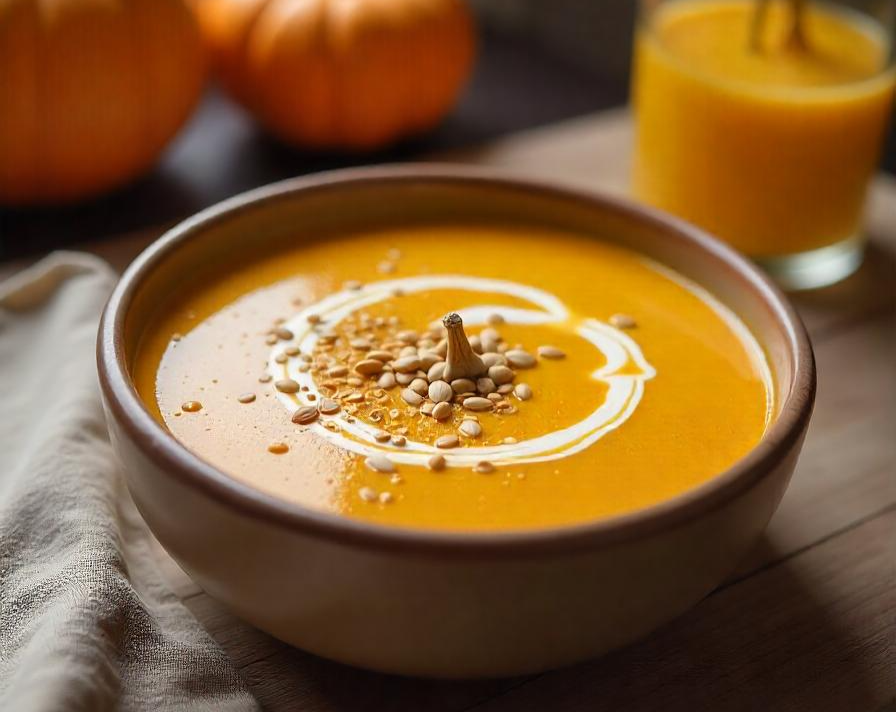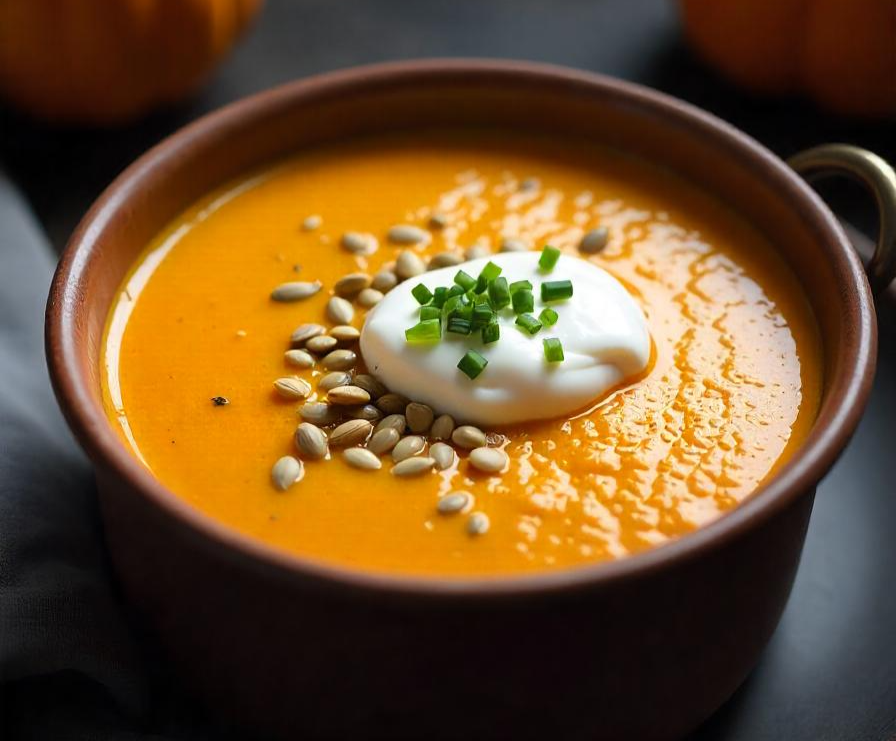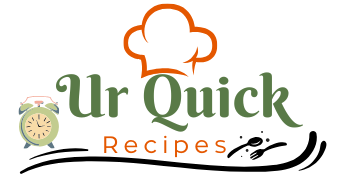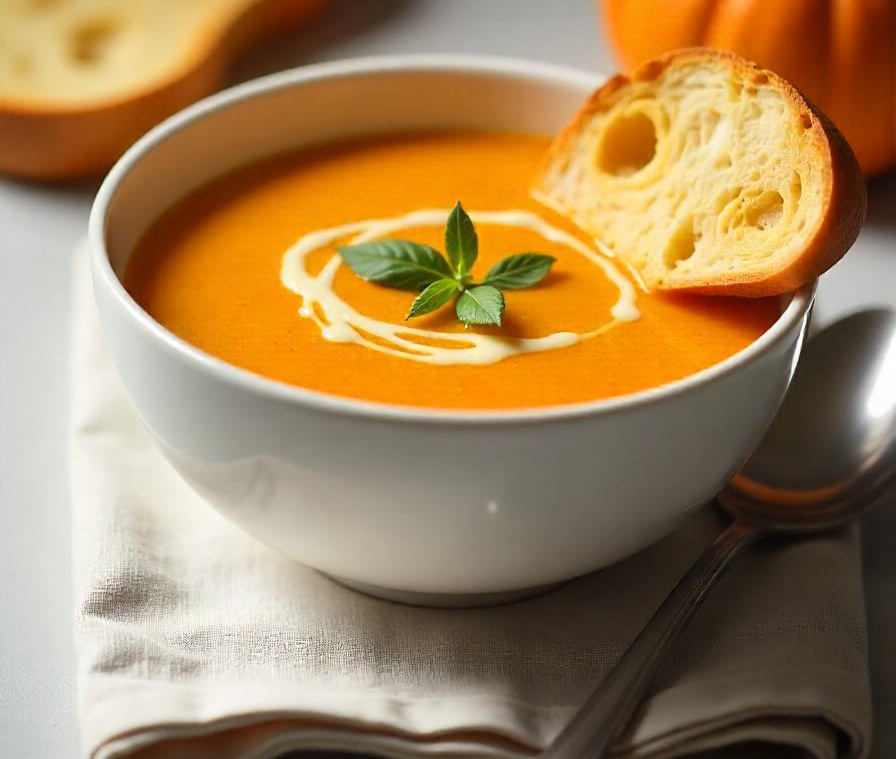Pumpkins are much more than just the autumn decorations you see at every corner store or the centerpieces for Halloween festivities. This humble squash is packed with flavor, versatility, and nutrients, making it a true star in the culinary world. Whether you’re a fan of sweet desserts or savory dishes, pumpkins can do it all.
In this guide, we’ll explore a variety of pumpkin recipes from creamy soups to indulgent pies, pumpkin bread, and even savory risottos. We’ll also dive into the health benefits of pumpkin, share tips on how to cook it perfectly, and troubleshoot common cooking problems you might encounter when working with this wonderful vegetable. So grab your apron, because it’s time to embrace the power of pumpkin in your kitchen!
Table of Contents
Why Pumpkin is the Perfect Ingredient
Why should pumpkin be your go-to ingredient this fall (and beyond)? Aside from its amazing flavor, pumpkin is incredibly versatile, easy to work with, and can be used in both sweet and savory dishes. Whether you’re baking a cozy pumpkin bread, making a creamy pumpkin soup, or turning it into a side dish, pumpkin adapts wonderfully to a wide range of recipes.
It’s no wonder that pumpkin shows up everywhere during the cooler months it’s affordable, accessible, and packed with nutritional benefits that make it a perfect ingredient for health-conscious eaters. Plus, pumpkins are known to be rich in antioxidants, fiber, and vitamins that can support your immune system, improve your eyesight, and keep your digestive system running smoothly.
Health Benefits of Pumpkin
Pumpkin isn’t just a tasty treat it’s a nutritional powerhouse. Let’s explore some of the health benefits of adding this vibrant veggie to your meals.
Nutritional Value of Pumpkin
Packed with vitamins and minerals, pumpkin is a nutritious addition to your diet. One cup of cooked pumpkin contains around 50 calories and is an excellent source of vitamin A, which supports vision health. It’s also rich in fiber, helping with digestion and weight management. But that’s not all pumpkin also contains essential nutrients like potassium, vitamin C, and magnesium, all of which are important for heart health, skin health, and overall well-being.
Nutritional Benefits of Pumpkin: Learn more about the health benefits of pumpkin, including its vitamin A content, fiber, and antioxidants, at the U.S. Department of Agriculture (USDA) website.
Why Pumpkin Should Be a Part of Your Diet
If you’re looking for a way to boost your diet without adding unnecessary calories, pumpkin is the answer. Its high fiber content helps keep you full, which can prevent overeating and support weight loss. Plus, it’s naturally low in fat, so you can indulge in pumpkin-based recipes without feeling guilty. Whether you’re eating it in soups, pies, or baked goods, pumpkin is a healthy and satisfying addition to your meals.
Different Types of Pumpkins and Their Uses
Pumpkin comes in many shapes, sizes, and varieties. Some are better for savory dishes, while others are perfect for desserts. Understanding the different types of pumpkins can help you choose the right one for your recipes.
Varieties of Pumpkins for Cooking
- Sugar Pumpkins: These are small, sweet pumpkins that are perfect for making pies, muffins, and other desserts. They’re the go-to variety for most pumpkin-based baking recipes.
- Pie Pumpkins: Sometimes referred to as “sugar pumpkins,” these are also great for baking. They have a rich, dense texture that holds up well in pies, breads, and other baked goods.
- Carving Pumpkins: Typically large and not as sweet as pie pumpkins, carving pumpkins are better suited for decoration. However, they can still be roasted or used for savory dishes like soups if you’re in a pinch.
- Kabocha Pumpkins: This Japanese variety has a sweet, creamy texture that works wonderfully in soups and stews. It has a slightly nutty flavor that adds depth to savory recipes.
- Butternut Squash: Though technically not a pumpkin, butternut squash is often grouped with pumpkins due to its similar flavor profile. It’s perfect for soups, purees, and roasted dishes.
Choosing the Right Pumpkin for Your Pumpkin Recipes
If you’re planning to make pumpkin pie or pumpkin bread, you’ll want to choose a sugar pumpkin or pie pumpkin. These varieties have a sweet flavor and smooth texture, making them ideal for desserts. For savory dishes like soups or risottos, you may want to opt for a more robust variety like the kabocha pumpkin or even butternut squash. These varieties tend to have a firmer, slightly sweeter flesh that works beautifully in heartier dishes.
How to Prepare and Cook Pumpkin
Preparing pumpkin doesn’t have to be intimidating. With the right tools and techniques, you can easily transform this large squash into something delicious. Let’s go over some helpful tips for cutting, peeling, and cooking pumpkin.
How to Cut and Peel Pumpkin Efficiently
Cutting and peeling pumpkins can be a challenge because of their tough skin, but don’t worry there are some tricks to make the process smoother:
- Use a Sharp Knife: Make sure your knife is sharp. A dull knife can make it harder to cut through the pumpkin’s tough exterior.
- Cut Off the Top and Bottom: Start by slicing off the top and bottom of the pumpkin to create a stable base. This will make it easier to cut the pumpkin in half.
- Scoop Out the Seeds: Once the pumpkin is halved, scoop out the seeds and stringy fibers using a spoon. Save the seeds if you want to roast them later!
- Peel the Skin: If you’re looking to peel the pumpkin, you can use a vegetable peeler or a sharp knife to carefully remove the skin. Alternatively, roasting the pumpkin with the skin on and then scooping out the flesh afterward is another great option.
Roasting, Boiling, or Steaming: Which Method is Best?
When it comes to cooking pumpkin, there are a few methods you can use:
- Roasting: Roasting pumpkin brings out its natural sweetness and creates a rich, caramelized flavor. Simply cut the pumpkin into wedges or cubes, drizzle with olive oil, and roast at 375°F for 30-45 minutes, depending on the size of the pieces.
- Boiling: If you’re making a puree or soup, boiling pumpkin is a fast and easy method. Simply chop the pumpkin into cubes and boil until tender (about 20 minutes).
- Steaming: Steaming pumpkin retains more nutrients compared to boiling, as the pumpkin isn’t submerged in water. This method is ideal if you’re looking to keep the pumpkin’s natural flavors intact.
Easy and Flavorful Pumpkin Recipes
Pumpkin isn’t just for pies! There are so many delicious and creative ways to incorporate this nutrient-packed vegetable into your meals. From cozy soups to indulgent baked goods, pumpkin can add flavor, texture, and nutrition to a wide variety of dishes. Let’s dive into some easy and flavorful pumpkin recipe that is sure to become your new favorite!

Classic Soup For a Great Pumpkin Recipe
Nothing says “fall” quite like a warm, creamy pumpkin soup. This classic recipe is a perfect way to showcase the natural sweetness of pumpkin while adding savory ingredients to create a comforting and satisfying dish.
Ingredients
- 1 medium-sized pumpkin (peeled, deseeded, and cubed)
- 1 onion, chopped
- 2 garlic cloves, minced
- 1 tablespoon olive oil
- 4 cups vegetable broth
- 1 teaspoon ground cumin
- 1 teaspoon ground ginger
- Salt and pepper to taste
- Optional: A splash of heavy cream or coconut milk for creaminess
Instructions
- In a large pot, heat olive oil over medium heat. Add the onion and garlic and sauté until softened (about 5 minutes).
- Add the cubed pumpkin, cumin, ginger, salt, and pepper. Stir to coat the pumpkin in the spices.
- Pour in the vegetable broth and bring the mixture to a boil. Reduce the heat and let it simmer for 20-25 minutes, or until the pumpkin is tender.
- Use an immersion blender to blend the soup until smooth, or carefully transfer the mixture to a blender in batches.
- For a creamier soup, stir in a splash of heavy cream or coconut milk. Adjust seasoning to taste, and serve hot with a sprinkle of fresh herbs or a dollop of sour cream.
This pumpkin soup is perfect for a cozy dinner on a chilly evening, and it’s easy to make in just under 30 minutes!
For a hearty meal, you might want to pair your pumpkin soup with other delicious options like the Simple Cranberry Beans Soup on the site.
Pumpkin Recipes for Special Diets
Pumpkin is a great ingredient for many special pumpkin recipes, from vegan to gluten-free. Whether you’re avoiding dairy, gluten, or animal products, there are plenty of pumpkin recipes that fit your needs while still being delicious.
Vegan Pumpkin Recipes to Try
For those following a vegan diet, pumpkin can be transformed into hearty, flavorful meals that are entirely plant-based. Here are a few vegan-friendly pumpkin recipes to consider:
- Vegan Pumpkin Curry: A rich, creamy curry with coconut milk, spices, and pumpkin chunks. Serve it over rice for a filling meal.
- Vegan Pumpkin Muffins: These moist, spiced muffins are perfect for breakfast or a snack. Made with flour alternatives and sweetened with maple syrup, they’re a tasty treat for everyone.
If you’re looking to add more vegetables to your pumpkin recipes, check out the Broccoli Cauliflower Salad for a nutrient-packed side dish.
Gluten-Free Pumpkin Recipes
If you’re avoiding gluten, you’ll be happy to know that pumpkin is naturally gluten-free. Here are some gluten-free pumpkin dishes that you can enjoy:
- Gluten-Free Pumpkin Pancakes: These fluffy pancakes are made with gluten-free flour and pumpkin puree, giving them a delicious autumn flavor. Top with maple syrup or fresh berries for a perfect breakfast.
- Pumpkin Quinoa Salad: A savory, protein-packed dish featuring roasted pumpkin, quinoa, and a zesty dressing. It’s a perfect gluten-free side dish or light meal.
Looking for a refreshing side to complement your pumpkin-based dishes? Try making the Carrot and Raisin Salad that pairs wonderfully with any pumpkin recipe.

How to Store and Preserve Pumpkin for Later Use
If you’ve bought too many pumpkins or have leftovers, you might wonder how best to store them. Don’t worry there are several ways to store and preserve pumpkin so you can enjoy it well beyond pumpkin season.
Freezing Pumpkin: Tips for Long-Term Storage
Freezing pumpkin is a great way to preserve its flavor and nutrients. Here’s how to do it:
- Prepare the Pumpkin: First, peel, deseed, and cut the pumpkin into cubes.
- Blanch the Pumpkin: To preserve color and texture, blanch the pumpkin cubes by boiling them for 2-3 minutes, then immediately transferring them to ice water to cool.
- Freeze: Once cooled, spread the pumpkin cubes in a single layer on a baking sheet and freeze them for a few hours. After that, transfer the frozen cubes into freezer bags or containers. They can be stored in the freezer for up to 3 months.
Canning Pumpkin: A Step-by-Step Guide
Canning pumpkin is another great option for long-term storage. If you’re considering canning, follow these steps:
- Prepare the Pumpkin: Peel, deseed, and chop the pumpkin into chunks.
- Cook the Pumpkin: Cook the pumpkin by boiling or roasting it until tender, then mash or puree it.
- Sterilize Jars: Sterilize your canning jars and lids by boiling them in water.
- Fill the Jars: Pack the pumpkin puree into the sterilized jars, leaving about an inch of space at the top.
- Process the Jars: Process the jars in a boiling water canner for 90 minutes. Once cooled, store the jars in a cool, dark place.
Canned pumpkin can last for up to a year and is perfect for using in pies, soups, or sauces throughout the year.
Troubleshooting Common Pumpkin Recipes Problems
As with any cooking process, you may encounter a few challenges when working with pumpkin. Let’s address some common pumpkin cooking problems and how to solve them.
How to Avoid a Watery Pumpkin Soup or Pie
If your pumpkin soup or pie turns out watery, it could be because the pumpkin wasn’t drained properly, or too much liquid was added. To prevent this:
- For soups, make sure the pumpkin is well-cooked and pureed thoroughly. If the soup is too thin, simmer it longer to reduce the liquid and thicken it up.
- For pies, use canned pumpkin puree, as it tends to be thicker than fresh pumpkin puree. If you’re using fresh pumpkin, make sure to drain it after cooking to remove excess water.
What to Do if Your Pumpkin Recipes Turn Out Too Sweet or Too Bland
If your pumpkin recipes taste too sweet, you can balance it out with a little acidity, like lemon juice or vinegar. If it’s too bland, try adding more spices (such as cinnamon, ginger, or nutmeg) or a pinch of salt to bring out the pumpkin’s natural flavor.
Why You Should Incorporate Pumpkin Recipes into Your Diet
Now that you know how to prepare, cook, and enjoy pumpkin in a variety of ways, it’s clear that this humble vegetable deserves a place in your kitchen year-round. Whether you’re making classic pumpkin soup, baking pumpkin pie, or creating inventive dishes like pumpkin risotto or pumpkin smoothies, there’s no shortage of ways to incorporate pumpkin into your meals.
Not only is pumpkin delicious and versatile, but it’s also packed with nutritional benefits that can boost your health. Its high fiber content helps with digestion, its rich vitamin A content supports your immune system, and its natural sweetness satisfies your cravings for comfort foods without adding unnecessary sugar.
From savory dishes to sweet desserts, pumpkin offers something for everyone. So, next time you’re at the store or farmer’s market, grab a pumpkin (or two) and get creative in the kitchen!
All Your Pumpkin Recipes Questions Answered
Can I use fresh pumpkin instead of canned pumpkin puree?
Yes, you can absolutely use fresh pumpkin instead of canned pumpkin puree! However, you’ll need to prepare it first. Start by peeling, seeding, and cutting the pumpkin into cubes. Then, cook the pumpkin by either roasting it in the oven or boiling it. Once it’s tender, mash or puree it to match the consistency of canned pumpkin. Just make sure to drain any excess water if the pumpkin is too moist.
What’s the best way to cook pumpkin for soups?
The best way to cook pumpkin for soups is by roasting or boiling it. Roasting brings out the pumpkin’s natural sweetness, while boiling is quicker and easier if you’re in a time crunch. To roast, simply cut the pumpkin into cubes, toss with olive oil, salt, and pepper, and bake at 375°F (190°C) for 30-40 minutes, or until tender. If boiling, chop the pumpkin and cook in a pot with water until soft (about 15-20 minutes). Either method will work wonderfully for a creamy, flavorful pumpkin soup!
How can I prevent my pumpkin pie from being too watery?
A common issue when making pumpkin pie is that the filling can turn out watery. To avoid this, use high-quality canned pumpkin puree or make sure to drain fresh pumpkin before using it. When making the filling, avoid overmixing it to prevent adding extra moisture. If your pie still turns out watery, you can bake it a little longer at a lower temperature to help firm it up.
Can I freeze pumpkin puree for later use?
Yes! Pumpkin puree freezes beautifully, making it easy to prepare pumpkin dishes ahead of time. To freeze, simply scoop the puree into an airtight container or freezer bag and label it with the date. Frozen pumpkin puree can be stored for up to 3 months. When you’re ready to use it, simply thaw it overnight in the refrigerator or defrost it in the microwave.
Can I add pumpkin to savory dishes like pasta or risotto?
Definitely! Pumpkin works wonderfully in savory dishes like pasta, risotto, and even curries. For pasta, you can make a pumpkin sauce by combining pumpkin puree with cream, garlic, and spices like cinnamon, nutmeg, and sage. In risotto, you can stir in pumpkin puree during the cooking process to add a creamy texture and earthy flavor. The possibilities are endless when it comes to using pumpkin recipes!
How do I make pumpkin recipes more flavorful?
If you find that your pumpkin recipes are a little bland, try enhancing the flavor with spices and seasonings. Common spices that pair beautifully with pumpkin include cinnamon, nutmeg, ginger, cloves, and sage. You can also add a touch of salt, pepper, and a splash of vinegar or lemon juice to balance the sweetness. If you’re making savory dishes, consider adding garlic, onion, and fresh herbs like thyme or rosemary.
Is pumpkin good for weight loss?
Yes, pumpkin recipes are are great food to include in a weight loss diet. It’s low in calories and high in fiber, which can help you feel full longer and reduce overeating. Pumpkin is also packed with vitamins and minerals like vitamin A and potassium, making it a healthy addition to your meals. Whether you’re enjoying it in soups, smoothies, or baked goods, pumpkin can support your weight loss goals in a nutritious way.
How long can I store cooked pumpkin in the refrigerator?
Cooked pumpkin can be stored in the refrigerator for up to 4-5 days in an airtight container. If you have leftover pumpkin puree or roasted pumpkin, store it in the fridge and use it in soups, pies, or even smoothies. You can also freeze it for longer storage if you won’t be able to use it within the week.


1 thought on “Pumpkin Recipe: Delicious Soup”